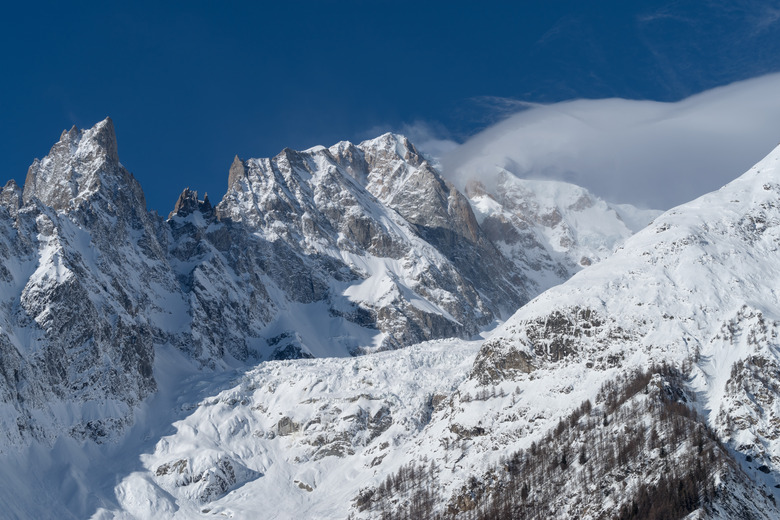A weather forecast for rain can quickly switch to one calling for snow if a sudden temperature drop occurs. Even a small amount of rain can turn into a serious snowstorm that accumulates several inches of snow on the ground and makes getting around difficult. Fortunately, it’s easy to convert inches of rainfall to inches of snowfall to get a sense for what to expect and to be able to modify your plans accordingly.
Baseline Rain-to-Snow Conversion
Perform the baseline rain-to-snow conversion. The baseline ratio of rain to snow is 1 inch of rain equals 10 inches of snow. For example, to calculate the snowfall equivalent of 3 inches of rain, multiply 3 by 10 to obtain 30 inches of snow as the baseline conversion. This conversion applies for snow falling at temperatures near freezing, between 28 and 34 degrees Fahrenheit.
Identify Temperature
Find the temperature in the location for which you’d like to perform the conversion. You can track down this info via the National Weather Service, for example, or any number of other meteorological sources, such as the Weather Channel. In general, colder temperatures make snow fall less densely and lower the rain-to-snow ratio, resulting in more inches of snow per inch of rain.
For Temperatures At or Below 27 Degrees F
Adjust your conversion to account for temperature if the outside temperature is less than or equal to 27 degrees Fahrenheit. To calculate rain to snow for temperatures between 20 and 27 degrees Fahrenheit, multiply rainfall by 15 instead of 10. For temperatures between 15 and 19 degrees Fahrenheit, multiply rainfall by 20. Between 10 and 14, multiply by 30; between 0 and 9, multiply by 40; between -20 and -1, multiply by 50, and between -40 and -21, multiply by 100. For example, to calculate the snowfall equivalent of 3 inches of rain at 5 degrees Fahrenheit, multiply 3 by 40 to obtain 120 inches of snow. Therefore, if 3 inches of rain are expected but the temperature drops suddenly to 5 degrees Fahrenheit, 120 inches of snow will fall.
Snow to Rain
Perform the calculations in reverse to calculate snow to rain. For example, for 8 inches of snow falling at a temperature of 20 degrees Fahrenheit, divide 8 by 15, since the conversion factor for 20 degrees is 15. The result is approximately 0.53 inches of rain. Therefore, 8 inches of snow that fell at 20 degrees Fahrenheit will melt down to approximately 0.53 inches of rain.
Warning
Many factors affect snow density apart from ambient temperature. Wind, for example, can compact snow and cause it to fall more densely, lowering the rain-to-snow ratio.

